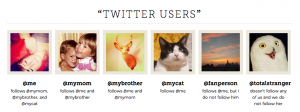In Social Media 110, I highlighted 7 services for shrinking URLs as a way to pack more information into the 140 characters Twitter allows.
After all, if you can compress a 90-character URL into 20 characters or fewer when sharing a link, that leaves you more space to provide information on what people will see when they click the link. That serves you and your users in two ways:
- You can be more colorful in your description, to encourage people to click, and
- You can give enough info that they may not need to click right away, but can perhaps “favorite” the link for later viewing or for reference.
Any of those seven link-shortening options work well, and there are no doubt dozens more available.
I’m returning to the subject today with an option some of you might find helpful, particularly if you work for a large organization. But it isn’t necessary that you be with a big company. In fact, even a small (but global) university can do this, and it doesn’t have to cost a lot.
You may have noticed some different shortened URLs in your Twitter stream from time-to-time, following a format like:
These are, as you might have guessed, custom-shortened links for a YouTube video, a story in the New York Times and a program note on CSPAN.
Why would they do that?
I see two main reasons for this strategy:
Branding: With youtu.be, nyti.ms and cs.pn, these organizations are “getting their names out” with every tweet that uses a link from their domain. Instead of the link being http://bit.ly/giXAam and just looking like hundreds of millions of others, CSPAN’s version carries its network name. Likewise for YouTube and the Times.
User confidence: With a bit.ly or ow.ly or TinyURL.com link, you never really know what’s on the other end before you click it. Creating a custom-shortened link system with a domain that you control enables users to click your link without worrying whether a site that is NSFW is on the other end.
How did they do that?
That’s the topic of my next post, in which I will take you step-by-step through how I created this shortened link to my annual Christmas Letter:
Meanwhile, I have a closing question: Besides the two I mentioned…
What are some other reasons you would want to have a short custom URL for your organization?

